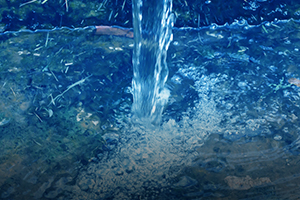Biofoam Water Purifier
 Worldwide, it has been estimated that four out of ten people suffer from a lack of clean drinking water. The health consequences can be serious, forcing them to obtain water from contaminated sources that can spread diseases like cholera, typhoid fever and salmonella. But now, an inexpensive and extremely lightweight, bi-layered biofoam has been developed that can purify and desalinate water using sunlight.
Worldwide, it has been estimated that four out of ten people suffer from a lack of clean drinking water. The health consequences can be serious, forcing them to obtain water from contaminated sources that can spread diseases like cholera, typhoid fever and salmonella. But now, an inexpensive and extremely lightweight, bi-layered biofoam has been developed that can purify and desalinate water using sunlight.
The foam itself is a nanoscale cellulose fiber network that’s produced by bacteria. As the first layer is being formed, graphene oxide flakes are added to increase light and heat absorption. At a certain point, the graphene oxide is removed to produce a pristine nanocellulose layer. The interface between the two layers is extremely robust, and the process is highly scalable.
When suspended on top of water, the pristine cellulose layer acts as an extremely effective sponge, drawing water to the top layer, where solar heat causes it to evaporate and re-condense rapidly. The fresh water is then easily collected from the top of the sheet.
The cellulose sheets can be produced very inexpensively on a massive scale, making it a viable solution for water purification and desalination in the poorest areas of the world. As long as there is ample sunlight, dirty water can be turned into clean, fresh water without the need for expensive purification facilities.
For information: Srikanth Singamaneni, Washington University, Campus Box 1099, One Brookings Drive, St. Louis, MO 63130; phone: 314-935-5407; email: singamaneni@wustl.edu; Web site: https://wustl.edu/